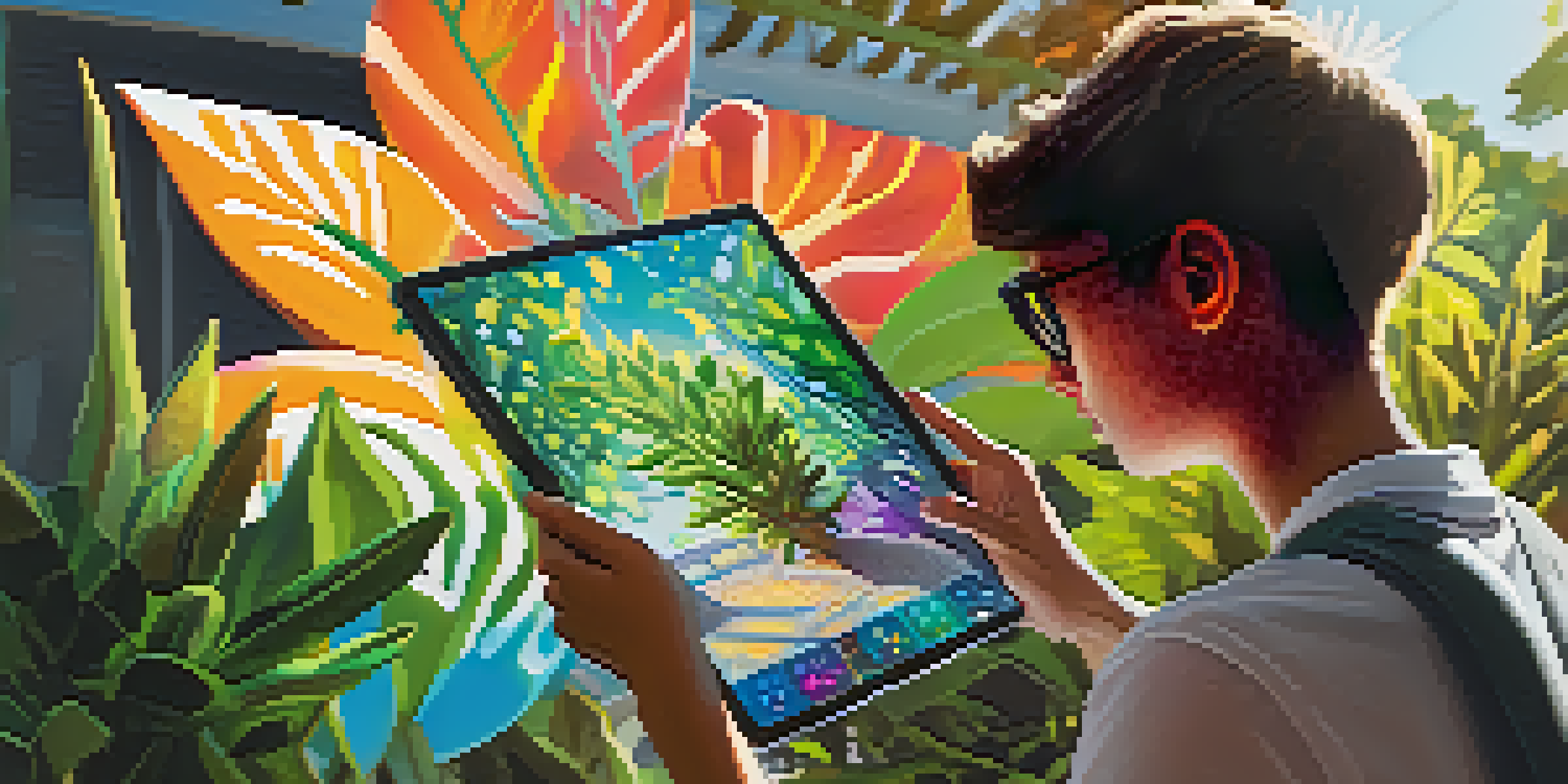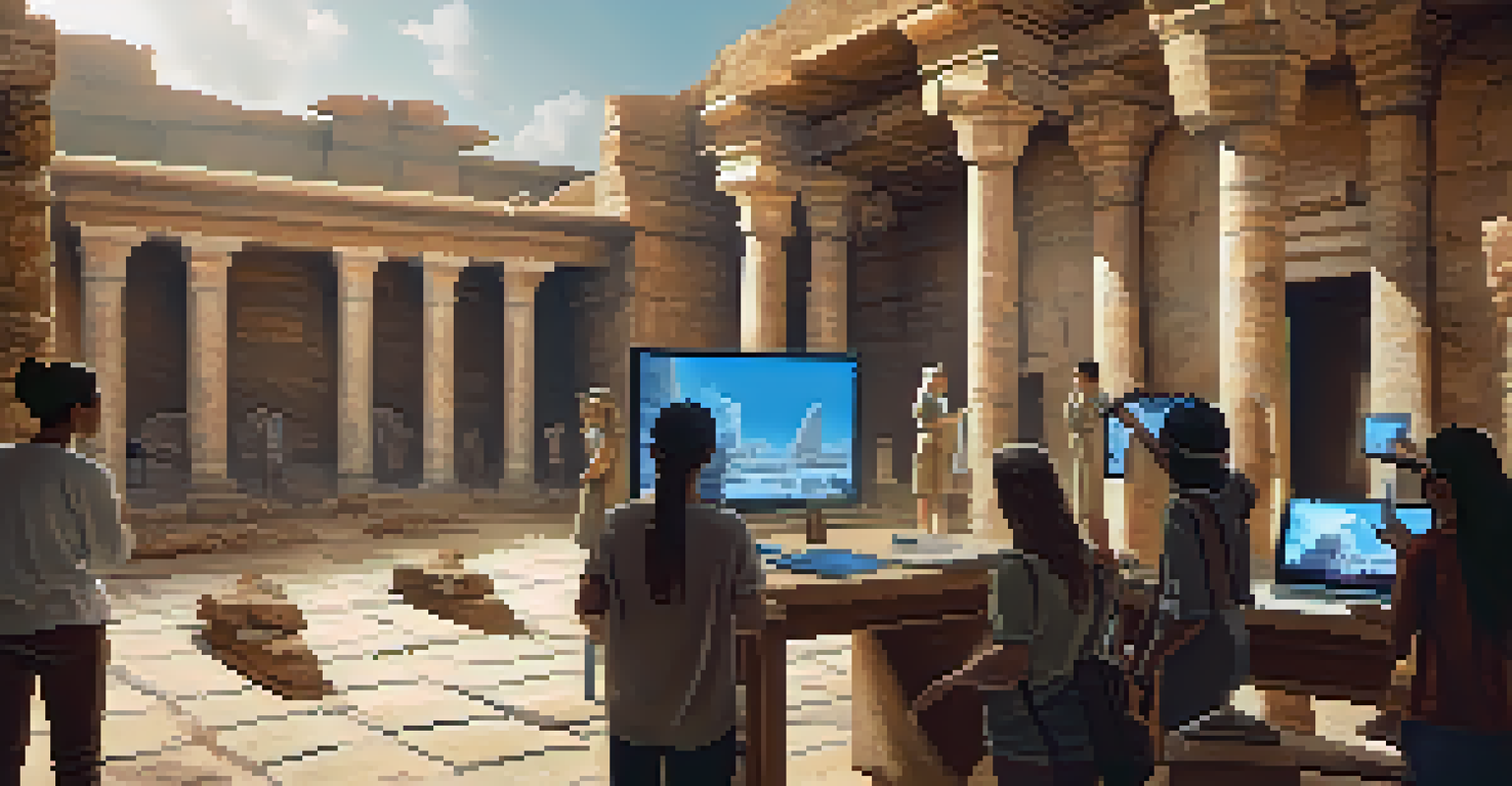Using Augmented Reality in Mobile Learning to Enhance Engagement

Understanding Augmented Reality and Mobile Learning
Augmented Reality (AR) overlays digital content onto the real world, creating an interactive experience. In mobile learning, this means learners can engage with educational material in a more immersive way, making concepts come alive. For example, a biology student can point their device at a plant and see information about its cellular structure right on the screen.
The beautiful thing about learning is that no one can take it away from you.
Mobile learning, or m-learning, refers to educational experiences facilitated through mobile devices. This flexibility allows learners to access information anytime and anywhere, fitting education into their busy lives. By blending AR with m-learning, we create a dynamic educational experience that captures attention and enhances retention.
Together, AR and mobile learning offer a unique approach to education that caters to various learning styles. Visual learners benefit from graphic overlays, while kinesthetic learners engage with interactive elements. This synergy not only boosts engagement but also deepens understanding.
The Role of Engagement in Learning Outcomes
Engagement is a crucial factor in effective learning. When students are actively involved, they are more likely to retain information and apply it in real-world situations. For instance, studies show that learners who interact with content through AR tend to have higher satisfaction rates and improved performance.

Using AR in mobile learning transforms passive consumption of information into an active, participatory process. Imagine a history lesson where students can explore ancient ruins virtually, enriching their understanding of the context. This hands-on approach fosters curiosity and motivates learners to delve deeper into the subject matter.
AR Enhances Mobile Learning Engagement
Augmented Reality transforms mobile learning by making educational experiences more interactive and immersive, leading to better retention and understanding.
Moreover, engaged learners often develop critical thinking skills as they navigate interactive challenges. By prompting students to solve problems or complete tasks, AR tools can create a more stimulating educational environment. This engagement not only enhances knowledge but also builds essential skills for the future.
Benefits of Augmented Reality in Mobile Learning
One of the most significant benefits of AR in mobile learning is its ability to provide instant feedback. When students interact with AR content, they can see immediate results of their actions, helping them understand concepts more clearly. For example, a physics simulation might show how forces affect motion in real-time, enhancing comprehension.
Education is not the filling of a pail, but the lighting of a fire.
AR also caters to diverse learning preferences, making education more inclusive. It allows educators to create personalized learning experiences that resonate with individual students. For instance, a student struggling with visualizing 3D objects can use AR to see and manipulate these objects right on their device.
Additionally, the element of fun associated with AR can drastically improve motivation. Gamification elements, such as points or rewards for completing AR tasks, can drive students to engage more deeply. This playful approach can transform learning from a chore into an exciting adventure.
Challenges in Implementing AR for Mobile Learning
Despite its advantages, integrating AR into mobile learning isn't without challenges. One significant hurdle is the technological barrier; not all students have access to the latest devices or stable internet connections. This disparity can create unequal learning opportunities, where some students benefit from AR while others are left behind.
Moreover, developing high-quality AR content requires time and expertise. Educators may struggle with creating engaging and effective AR experiences without adequate resources or training. This can lead to frustration and limit the potential of AR in the classroom.
Benefits of Instant Feedback in AR
With AR, students receive immediate feedback on their interactions, which clarifies concepts and deepens comprehension.
Lastly, there is the concern of distraction. While AR can be engaging, it can also divert attention if not designed thoughtfully. Striking the right balance between interactive content and focused learning is crucial to ensure that AR serves as a tool for education, not a source of distraction.
Real-World Examples of AR in Mobile Learning
Numerous institutions are already harnessing the power of AR in mobile learning. For instance, the Anatomy 4D app allows medical students to explore human anatomy in a 3D format, enabling them to visualize complex structures. This hands-on approach significantly enhances their understanding of the subject.
In language learning, apps like Mondly use AR to help students practice speaking with virtual characters. This immersive experience encourages learners to converse in real-time, improving their language skills in a fun way. By placing learners in realistic scenarios, they can practice without the fear of making mistakes.
Moreover, museums and cultural institutions are integrating AR into their exhibits, allowing visitors to learn more about artifacts through their mobile devices. For example, the British Museum offers AR experiences that provide additional context and stories behind historical items, enriching the visitor's journey.
Future Trends in AR and Mobile Learning
The future of AR in mobile learning looks promising as technology continues to evolve. We can expect more sophisticated AR applications that provide even richer educational experiences. With advancements in AI and machine learning, AR tools may personalize content based on individual learning styles and preferences.
As AR becomes more accessible, we’ll likely see a surge in user-generated content, where learners create their own AR experiences. This shift not only empowers students but also fosters creativity and collaboration. Imagine a classroom where students design their own AR lessons, sharing knowledge with their peers.
Overcoming AR Implementation Challenges
Despite its advantages, integrating AR into education requires addressing technological barriers and ensuring quality content development to avoid distractions.
Furthermore, the integration of AR with other emerging technologies, such as virtual reality (VR) and the Internet of Things (IoT), could reshape the landscape of mobile learning. These synergistic approaches will create even more immersive environments, where learning is not just confined to textbooks but is a vibrant, interactive experience.
Conclusion: Embracing AR for the Future of Learning
In conclusion, augmented reality has the potential to revolutionize mobile learning by enhancing engagement and interactivity. As we embrace this technology, we open the doors to a more immersive and effective educational experience. The key is to approach AR thoughtfully, ensuring it complements traditional learning methodologies.
Educators and institutions must collaborate to overcome challenges and harness the benefits of AR for all learners. By investing in resources and training, we can create an equitable environment where every student has the opportunity to thrive. The goal is to make learning not just informative, but also enjoyable and memorable.

As we look ahead, it’s clear that AR will play an integral role in the future of education. By embracing this technology, we can inspire a generation of learners eager to explore, discover, and engage with the world around them.